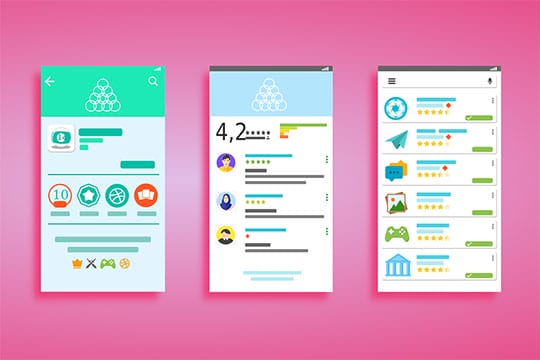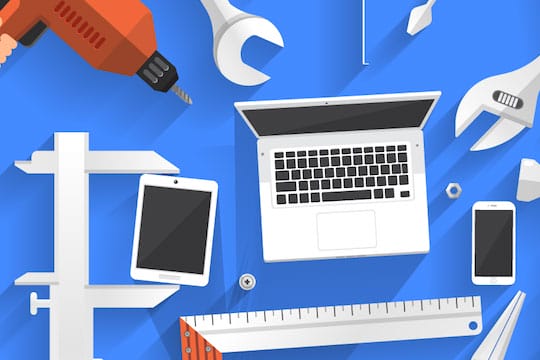SDLC is a process used to develop software. The life cycle follows the development of the software from the planning stages to operation and maintenance.
The Software development life cycle (SDLC) identifies the tasks that need to be completed in order for the software to be designed, created, and delivered. These tasks form a structure for the developers to operate within.
There are 7 stages or phases to the SDLC, all with their own unique activities and task completion list. These 7 phases provide a roadmap of what needs to be done in order for the software to be completed and delivered.
Keep reading to learn about the 7 phases of the SDLC today!
1. Planning

This is the first phase of the SDLC. During this phase is when the determination of whether a need exists or not for a new system to improve business operations. Once the need has been determined (or the problem identified), solutions need to be found.
Information and resources are gathered during this phase to support the need for a new system or improvement to an already existing one. Based on the information supporting the need, solutions are devised and submitted for approval.
During this phase is a good idea to brush up on current web development industry trends in order to have the most up-to-date information and resources to meet the need.
Recommended for you: How AI is Influencing the Development of Modern Web Apps?
2. Systems Analysis and Requirements

This is where the proposed solutions are examined until one is found that best matches the overall strategy and goals of the company. During this phase, planning is still conducted but on a much deeper analytical level.
The problem and associated systems are analyzed to determine the functional requirements for the project or the solution. These would be the requirements that the new system needs to meet in order to solve the problem and align with corporate strategy.
This is where a timeline is chosen, who is responsible for individual parts is determined, and how the needs of the business can be met.
3. Systems Design

Just as it sounds this is where the new system or software will be designed. The parameters will be discussed with stakeholders along with the technologies to be used, project constraints, and time and budget. After review, the best design approach is chosen that will meet the requirements determined in the second phase.
The design approach that is chosen will need to provide a definition of all components that need to be developed, user flows and database communications, and communications with third-party services.
4. Development

The development phase is where actual real work begins on the new system or software. Typically, a programmer, network engineer, or database developer, or any combination will be brought on to begin writing source code.
It’s important during this phase to have a flow chart created. This flow chart is used to ensure that the system’s processes are properly organized.
While this phase usually pertains to the development of the actual software to be used, in the prototype model, this is the phase in which the prototype is developed. The prototype is then continuously developed and tested until it meets the needs of the customer and the customer is satisfied. After that, the prototype returns one final time to this phase.
During its last trip to the development phase, it will be developed and turned into the actual software or system to be used.
5. Integration and Testing

During this phase, experienced testers will begin to test the software or system against the requirements. The goal is to identify any defects within the system and whether or not it behaves in accordance with the documented requirements from the second phase.
This phase is crucial to delivering the software. It is common to bounce back and forth from the testing phase to the development phase. This is because as defects or problems are found within the software or system it is noted and sent back to the development phase for a solution.
There is a couple of different ways testers can test systems and software. They can either use a test script or use exploratory testing.
Using a test script will automatically run a series of predetermined tests to make sure the system is in compliance with the requirements. Using exploratory testing is more experience-based. The tester will test the new system by exploring its uses, features, and capabilities by operating the new system or software. The tester will navigate the system based on experience alone and will evaluate whether it meets requirements or not.
Once all requirements have been met by the system the tester will pass the system or software onto the next phase. Depending upon the scope and size of the problems with the system this could take anywhere from a few days to a few months to occur.
You may like: Top 7 Web Development Trends to Focus On in 2019.
6. Implementation

Again, just as it sounds, this is the phase when the new system is implemented into normal business operations. The new software or system is installed requiring more code to be written as well as moving of any files or data to the new system.
Because of the risk of interrupting business operations during the install, this phase will usually occur during non-peak hours. This is because of the potential for any errors with integration or transfer. While the goal is to minimize these errors, they can occur and when they occur during peak hours the company can lose out on productivity and revenue.
End-users and analysts should be seeing the first glimpses of the finished system and the changes it will bring to the company.
7. Operations and Maintenance

The final phase of the SDLC involves regular maintenance and pushing out mandated updates. Here end-users have the ability to fine-tune the system to better suit future needs.
IT will be able to install new updates remotely, while also assisting in customizing the system to continuously meet the needs of the company. IT is also responsible for correcting any future errors or issues that may arise. No system is perfect and ongoing maintenance is a necessary part of any new system or software project.
SDLC Models
The SDLC can be used in a variety of ways called models. While these models differ from one another and have their own advantages and disadvantages, they all use the same steps in the same order. Here are two of the most popular models to use when following the SDLC.
Agile Model
 The agile model (wiki) focuses on flexibility during development rather than the requirements. Using the agile model requires breaking the project up into smaller incremental segments. Each segment is developed, tested, and evaluated by the end-user or customer before work on the next segment can begin.
The agile model (wiki) focuses on flexibility during development rather than the requirements. Using the agile model requires breaking the project up into smaller incremental segments. Each segment is developed, tested, and evaluated by the end-user or customer before work on the next segment can begin.
Effectively each segment builds on the functionality and features of the previous segment with customer input and feedback every step of the way. The time-frame for each segment to be worked on is known as a sprint.
Sprints can last around 2 to 4 weeks. Regardless of the timeframe for the sprint, at the end of the sprint, the owner verifies the product and grants approval or not on delivering it to the customers.
The customers will likewise leave comments and critiques for the company to relay back to the development team. Customer feedback and suggestions are collected every step of the way. However, if a customer is unclear in what they want the system to do, the model and the system could fail.
Prototype Model
 This model involves developing at least one if not multiple prototypes before the actual software or system. These prototypes don’t offer the full availability of services the full software or service does. However, they can be useful in determining the needs of the customers.
This model involves developing at least one if not multiple prototypes before the actual software or system. These prototypes don’t offer the full availability of services the full software or service does. However, they can be useful in determining the needs of the customers.
With the prototype model (wiki) instead of the actual software being sent to customers for feedback in the testing phase, the prototype is reviewed. The customer still delivers feedback and the prototype is sent back to development to make the changes. Once those changes have been made it’s back to the customer for review.
This goes on until the customer is satisfied and their needs have been met. Once the customer is satisfied the prototype is built and sent into the next phases of the SDLC.
One of the biggest advantages of this model is the cost savings. Because the testing is done on prototypes rather than the actual software, defects are found much earlier. This can save money and time when it comes to meeting deadlines and launch dates. Another advantage is the ability to stay up-to-date on current web development industry trends through the feedback of your customers.
But, a downside to this model is also one of its advantages. Customers are involved early on in the process providing feedback and helping to create a software that they will use and meets their needs. However, because of this, the customer can cause delays with launch and deployment by changing the requirement of the end product.
You may also like: Is Laravel a Perfect Framework for Business Web App Development?
Conclusion

Compliance and adherence to the SDLC are critical to ensuring the success of any project or software needed to solve a problem or meet a need. The SDLC is a series of 7 stages which define and explain the life-cycle of software development.
The SDLC can be implemented with a few models, the most notable of which are the agile and prototype model. Both models rely heavily on customer feedback early in the cycle. This allows the company to meet the needs of the customer effectively and timely.
Adopting the SDLC and a model for deployment will go a long way to helping your company problem solve, identify the needs of the company and customers, and deploy new systems and software to meet those needs.






